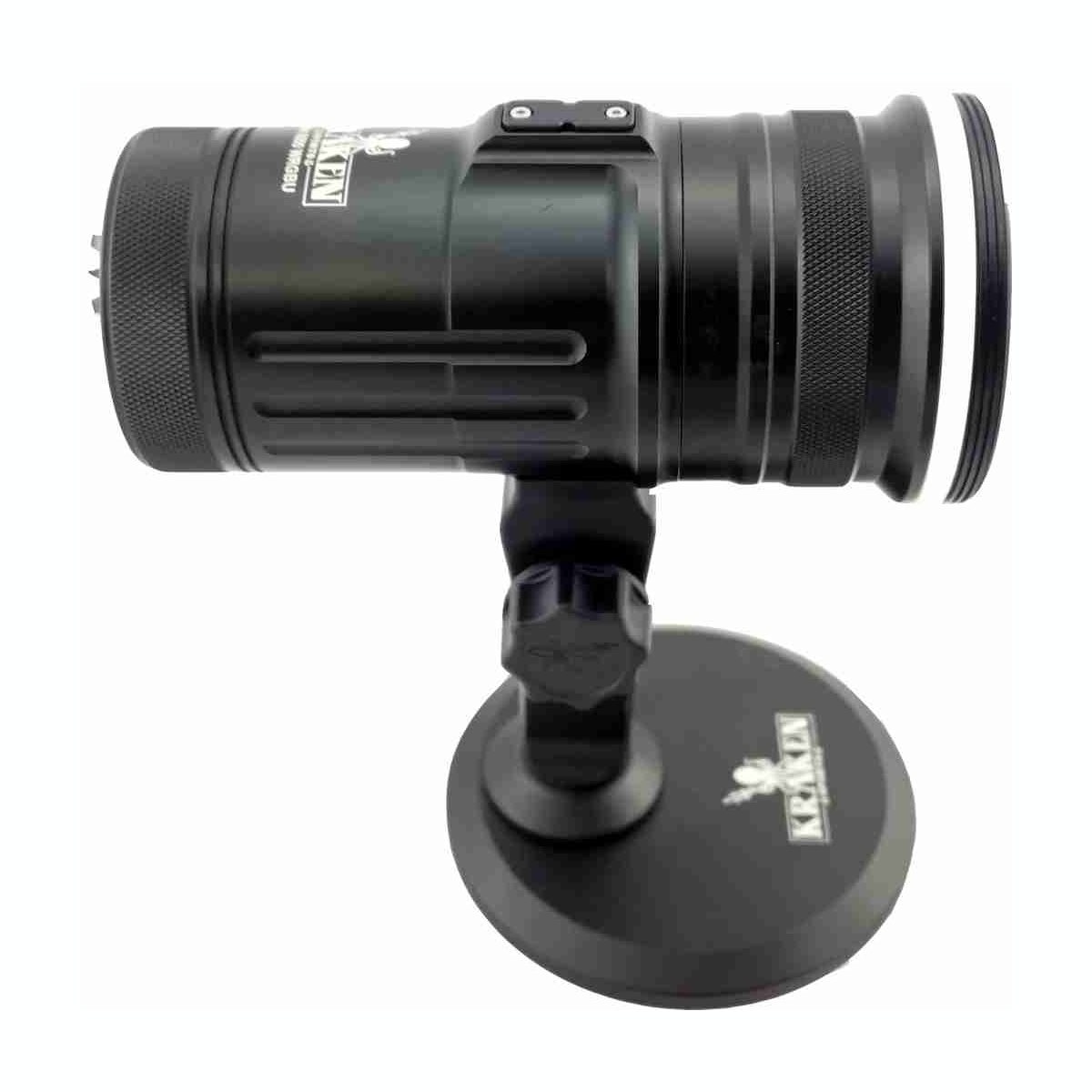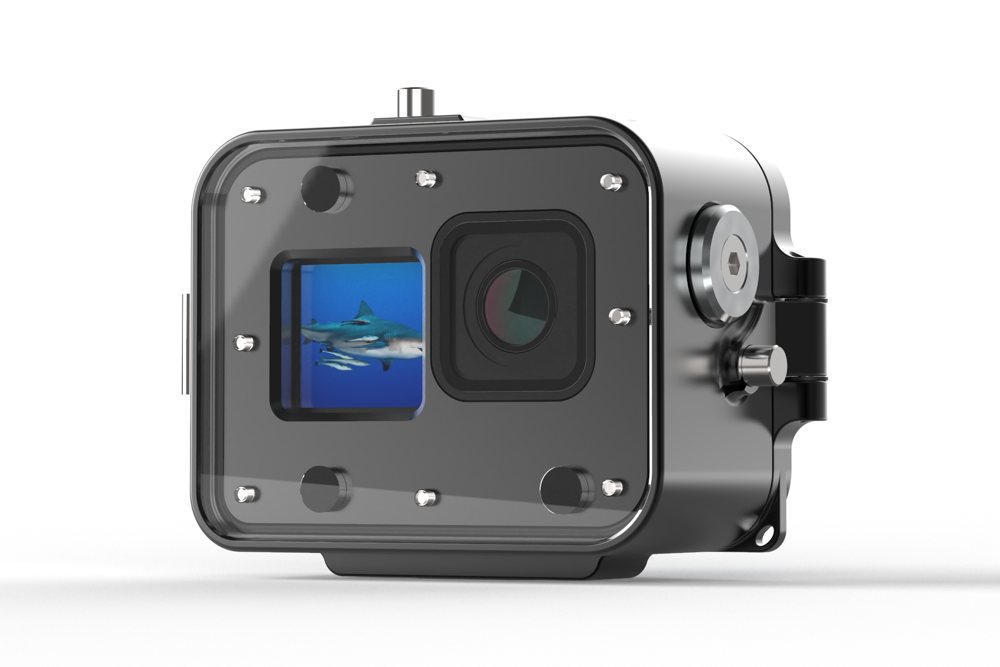- Home
- Directory
- Shop
- Underwater Cameras - Photographic Accessories
- Smartphone Housings
- Sea Scooters
- Hookah Dive Systems
- Underwater Metal Detectors
- Dive Gear
- Dive Accessories
- Diving DVD & Blu-Ray Discs
- Diving Books
- Underwater Drones
- Drones
- Subscriptions - Magazines
- Protective Cases
- Corrective Lenses
- Dive Wear
- Underwater Membership
- Assistive Technology - NDIS
- On Sale
- Underwater Gift Cards
- Underwater Art
- Power Stations
- Underwater Bargain Bin
- Brands
- 10bar
- AirBuddy
- Akona
- AOI
- Apollo
- AquaTech
- Atomic Aquatics
- aunoc
- AxisGo
- Backscatter Underwater Video and Photo
- BLU3
- Buddy-Watcher
- Cayago
- Chasing
- Cinebags
- Contour
- Deepblue
- Devilite
- Digipower
- DJI
- Dyron
- Edge Smart Drive
- Eneloop
- Energizer
- Exotech Innovations
- Fantasea
- FiiK Elektric Skateboards
- Garmin
- Geneinno
- GoPro
- Hagul
- Hoverstar
- Hydro Sapiens
- Hydrotac
- Ikelite
- Indigo Industries
- Inon
- Insta360
- Intova
- Isotta Housings
- Jobe
- JOBY
- Kraken Sports
- LEFEET
- Marelux
- Mirage Dive
- Nautica Seascooters
- Nautilus Lifeline
- NautiSmart
- Nocturnal Lights
- Nokta Makro
- Ocean Guardian
- Oceanic
- Olympus
- OM System
- Overboard
- Paralenz
- PowerDive
- QYSEA
- Ratio Dive Computers
- Scubajet
- Scubalamp
- Sea & Sea
- SeaDoo Seascooter
- SeaLife
- Seashell
- Seavu
- Shark Shield
- Sherwood Scuba
- Spare Air
- StickTite
- StormCase
- Sublue
- Suunto
- SwellPro
- T-HOUSING
- Tusa
- U.N Photographics
- Venture Heat
- XTAR
- Yamaha Seascooter
- Youcan Robot
- Zcifi
Great White Sharks - The Truth
Contributed by CarlyM
Of all the underwater wildlife species on our planet, the great white shark is perhaps the most feared by humankind. For 15 million years that have roamed our world's oceans, continuing to evolve in brilliant force to be the apex predator of the sea. Although so few, great white shark fatal attacks spark massive media attention in papers and TV forums around the world. And of the 63 fatal attacks ever recorded in the history of human deaths, 27 of these have occurred in our home country of Australia.
 The
fear of being eaten alive is undoubtedly very high on the list of worst ever
nightmares - not just for the victim, but for the family and friends left to
deal with the horrific loss of a loved one. In order to resist such occurrences,
so few and far in between, certain Political Parties insist on exploring the
option of netting popular swimming beaches and monitoring our coastlines with
shark spotter planes. The facts regarding these options though are usually ignored.
The netting system (in NSW and Queensland for example) is responsible for killing
a multitude of native wildlife. Thousands of dolphins, sea turtles, stingrays,
other species of sharks and thousands of ocean going fish are killed when they
get stuck in the nets and drown.
The
fear of being eaten alive is undoubtedly very high on the list of worst ever
nightmares - not just for the victim, but for the family and friends left to
deal with the horrific loss of a loved one. In order to resist such occurrences,
so few and far in between, certain Political Parties insist on exploring the
option of netting popular swimming beaches and monitoring our coastlines with
shark spotter planes. The facts regarding these options though are usually ignored.
The netting system (in NSW and Queensland for example) is responsible for killing
a multitude of native wildlife. Thousands of dolphins, sea turtles, stingrays,
other species of sharks and thousands of ocean going fish are killed when they
get stuck in the nets and drown.
 As
for the spotter planes, the cost of running such an operation means thousands
of dollars in taxpayer's money. The spotter planes do indeed spot sharks, but
what sort of sharks actually are they? Do the reports mention the species of
shark? (It could be a 1 metre long bronze whaler). Do they mention if it's the
same shark they actually spot more than once on their coastal laps? And most
importantly, do they mention the distance the shark is away from the coastline?
As
for the spotter planes, the cost of running such an operation means thousands
of dollars in taxpayer's money. The spotter planes do indeed spot sharks, but
what sort of sharks actually are they? Do the reports mention the species of
shark? (It could be a 1 metre long bronze whaler). Do they mention if it's the
same shark they actually spot more than once on their coastal laps? And most
importantly, do they mention the distance the shark is away from the coastline?
With 27 deaths recorded in the history of great white shark fatal attacks in
Australia, the question has to be asked, is it actually worth all the fuss?
 Delving
into the study about where white sharks travel and how many there actually are
in our waters, is CSIRO great white shark scientist, Barry Bruce. Based in Hobart,
Tasmania, Barry has been studying the movement patterns of white sharks for
over 20 years. His research has often taken him to the Neptune Islands, 70 kilometers
out to sea from Port Lincoln in South Australia. Resident on these islands is
colonies of New Zealand Fur Seals, attracting hungry great white sharks that
pass through the area. Calypso Star Charters is 1 of only 2 cage-diving tourism
operators in Australia that hosts international tourists wanting to see the
impressive giants up close in the flesh. Working closely with Barry Bruce is
Calypso's skipper, Rolf Czabayski, a game fishing world record holder for catching
one of the largest white pointers on one of the lightest lines. Rolf himself
has been involved in the tagging program and is responsible for independently
tagging over 300 of the 500-tagged white sharks in Australian waters. Since
the year 2000, Barry, with Rolf's assistance, has also attached 8 satellite
tags to white sharks and the result of their research has been amazingly extensive.
Delving
into the study about where white sharks travel and how many there actually are
in our waters, is CSIRO great white shark scientist, Barry Bruce. Based in Hobart,
Tasmania, Barry has been studying the movement patterns of white sharks for
over 20 years. His research has often taken him to the Neptune Islands, 70 kilometers
out to sea from Port Lincoln in South Australia. Resident on these islands is
colonies of New Zealand Fur Seals, attracting hungry great white sharks that
pass through the area. Calypso Star Charters is 1 of only 2 cage-diving tourism
operators in Australia that hosts international tourists wanting to see the
impressive giants up close in the flesh. Working closely with Barry Bruce is
Calypso's skipper, Rolf Czabayski, a game fishing world record holder for catching
one of the largest white pointers on one of the lightest lines. Rolf himself
has been involved in the tagging program and is responsible for independently
tagging over 300 of the 500-tagged white sharks in Australian waters. Since
the year 2000, Barry, with Rolf's assistance, has also attached 8 satellite
tags to white sharks and the result of their research has been amazingly extensive.
The white sharks tagged in South Australia, travel up to 80 kilometres in a single day and are the same great white sharks spotted in Tasmania, Victoria, New South Wales, Queensland and Western Australia. Its not that there are white pointers all over Australia, it's the same group of white sharks that are found everywhere. They usually travel on their own but take almost identical underwater pathways arriving at the same locations but at varied times throughout the year. Great whites are more common to pass by the Neptune Islands in winter, and once the seals have finished puppying, move up the east or west coasts of Australia in search of different food. The migration of humpback whales up both coasts of Australia attracts white sharks, as does the calving of Southern Right Whales near Nullabor in the Great Australian Bight. Seal colonies and baby whales however, are not the only food source for white sharks. Large ocean going fish such as tuna and salmon, dolphins, stingrays and other species of sharks also fall quite high on the white sharks diet and is believed to be the reason they may occasionally venture closer to our shoreline.
 Once
they've traveled around during the seasonal changes, some of the white sharks
will return back to the very same spot they left from a year earlier for a returning
food source, such as the next seal puppying season at the Neptune Islands. And
its this high mobility data that leads us to believe that there are actually
fewer great white sharks out there than we realise because they are all the
same ones. Even on an international scale, the distance that white sharks travel
continues to unfold. One white shark that was tagged in South Australia was
the same shark that was later spotted in New Zealand.
Once
they've traveled around during the seasonal changes, some of the white sharks
will return back to the very same spot they left from a year earlier for a returning
food source, such as the next seal puppying season at the Neptune Islands. And
its this high mobility data that leads us to believe that there are actually
fewer great white sharks out there than we realise because they are all the
same ones. Even on an international scale, the distance that white sharks travel
continues to unfold. One white shark that was tagged in South Australia was
the same shark that was later spotted in New Zealand. This is the only occurrence of a white shark tagged in South Australia that
has gone outside of Australian waters. But recently, a white shark tagged in
South Africa showed up near the North Western Shelf of Western Australia. Interestingly,
at the same time of year, that other white sharks go to in the summer months.
As to why they choose to go here in the summer months is a mystery, though its
more than likely related to a food source.
This is the only occurrence of a white shark tagged in South Australia that
has gone outside of Australian waters. But recently, a white shark tagged in
South Africa showed up near the North Western Shelf of Western Australia. Interestingly,
at the same time of year, that other white sharks go to in the summer months.
As to why they choose to go here in the summer months is a mystery, though its
more than likely related to a food source.
Other interesting data from Barry Bruce's research aboard Rolf's boat involves
white shark reproduction and how big they actually get. The Neptune Islands
sees some of the most smallest and largest of great white sharks, which brings
Barry to believe that reproduction must happen near this area. Unknowingly to
many, one of the major reasons white sharks are a protected species in Australian
waters is because of their poor ability to reproduce their numbers. The females
don't start reproducing until they're very big - until they're 5 metres in length
and they don't reproduce every year. It's quite possible that they only reproduce
1 in every 3 years. And unlike other ocean species that reproduce very large
numbers at a time such as snapper or brim, white sharks only produce up to 10
pups. These pups when born, are 1.5 metres long, hence the necessary large size
of the birth mother, and like any new born in wildlife, not all of those will
survive. Once born, the perfectly developed little white sharks  grow
at a rapid rate of 30cm per year until they're 3 metres in length. Their growth
rate then slows down with males expecting to reach maturity at 7-9 years of
age at a length of 3.5 to 4 metres. The females mature later than the males
at 12-17 years of age at a larger length of 4.5 to 5 metres. The largest white
shark measured in the scientific community is 6.1 metres but scientists believe
they may grow up to 7 metres in total length, weigh up to 3000 kilos and can
live up to 60 years of age.
grow
at a rapid rate of 30cm per year until they're 3 metres in length. Their growth
rate then slows down with males expecting to reach maturity at 7-9 years of
age at a length of 3.5 to 4 metres. The females mature later than the males
at 12-17 years of age at a larger length of 4.5 to 5 metres. The largest white
shark measured in the scientific community is 6.1 metres but scientists believe
they may grow up to 7 metres in total length, weigh up to 3000 kilos and can
live up to 60 years of age.
Their poor ability to reproduce however, leads Barry to believe that the birth rate of white sharks now equals their natural death rate, making them a very vulnerable species, and humans' influence on their population status, potentially devastating.
 Suddenly,
more than ever before, humans effect and influence on a creature that we fear
so much, is vital. In Australia, the great white shark is generally misconceived
as a ruthless killer with many people questioning the safety of our beaches.
Overseas however, great white sharks are more of a positive tourism draw card
than an ignored asset. In South Africa, cage-diving tourism operators are in
the dozens, giving thrill seekers the opportunity of a lifetime to see a great
white up close. Calypso Star Charters, though only 1 of 2 operators here in
Australia, also run a very successful business, which attracts tourists from
all around the world. Our water here is very clear and you don't need to have
your scuba diving license to experience the cage. Rolf Czabayski has been running
his tourism operation since 1990 and he says the reactions on the faces of people
who experience the thrill of seeing great white sharks, is simply, "unbelievable"
Suddenly,
more than ever before, humans effect and influence on a creature that we fear
so much, is vital. In Australia, the great white shark is generally misconceived
as a ruthless killer with many people questioning the safety of our beaches.
Overseas however, great white sharks are more of a positive tourism draw card
than an ignored asset. In South Africa, cage-diving tourism operators are in
the dozens, giving thrill seekers the opportunity of a lifetime to see a great
white up close. Calypso Star Charters, though only 1 of 2 operators here in
Australia, also run a very successful business, which attracts tourists from
all around the world. Our water here is very clear and you don't need to have
your scuba diving license to experience the cage. Rolf Czabayski has been running
his tourism operation since 1990 and he says the reactions on the faces of people
who experience the thrill of seeing great white sharks, is simply, "unbelievable"
Unfortunately, for the great white shark though, the rare accidental fatal attack on human beings continues to override the actual statistics and facts. Truth is, despite the millions of hours people spend in the ocean, you're 5 times more likely to get struck by lightening than suffer the jaws of a white pointer. With careful consideration of the facts, perhaps we can begin to see white sharks in a different light. The great white shark is a traveler. It is an iconic and magnificent species. It is playing a vital role in what is the nature of our open oceans. Fearing them is acceptable, but they have been protected for a reason. Lets keep it that way.
*** To learn more, independent Adelaide production company, Abyss Pictures, has just completed their new wildlife film, "Tracking White Sharks".
Shopfront
-
 QYSEA Fifish V6 Expert - Underwater Modular Drone Kit
QYSEA Fifish V6 Expert - Underwater Modular Drone Kit
- Price A$ 4,999.00
-
 Garmin Descent Mk2 Watch Dive Computer - Stainless Steel - Black Band
Garmin Descent Mk2 Watch Dive Computer - Stainless Steel - Black Band
- Price A$ 2,039.00
-
 AquaTech EDGE PRO Conversion Kit - Sony - Nikon - Canon - Fuji
AquaTech EDGE PRO Conversion Kit - Sony - Nikon - Canon - Fuji
- Price A$ 1,049.00
-
 T-Housing Aluminium Deepdive Housing H8ENERGY for GoPro Hero 8
T-Housing Aluminium Deepdive Housing H8ENERGY for GoPro Hero 8
- Price A$ 579.00
-
 AquaTech Reflex Water Housing for Canon dSLR cameras
AquaTech Reflex Water Housing for Canon dSLR cameras
- Price A$ 1,949.00
-
 Inon UW Variable Red Filter M67
Inon UW Variable Red Filter M67
- Price A$ 239.95
-
 AxisGO Waterproof Case for iPhone 12
AxisGO Waterproof Case for iPhone 12
- Price A$ 169.00
In the Directory














 T-Housing Aluminium Deepdive Housing for GoPro Hero9 Hero10 HERO11 and HERO12
T-Housing Aluminium Deepdive Housing for GoPro Hero9 Hero10 HERO11 and HERO12 




